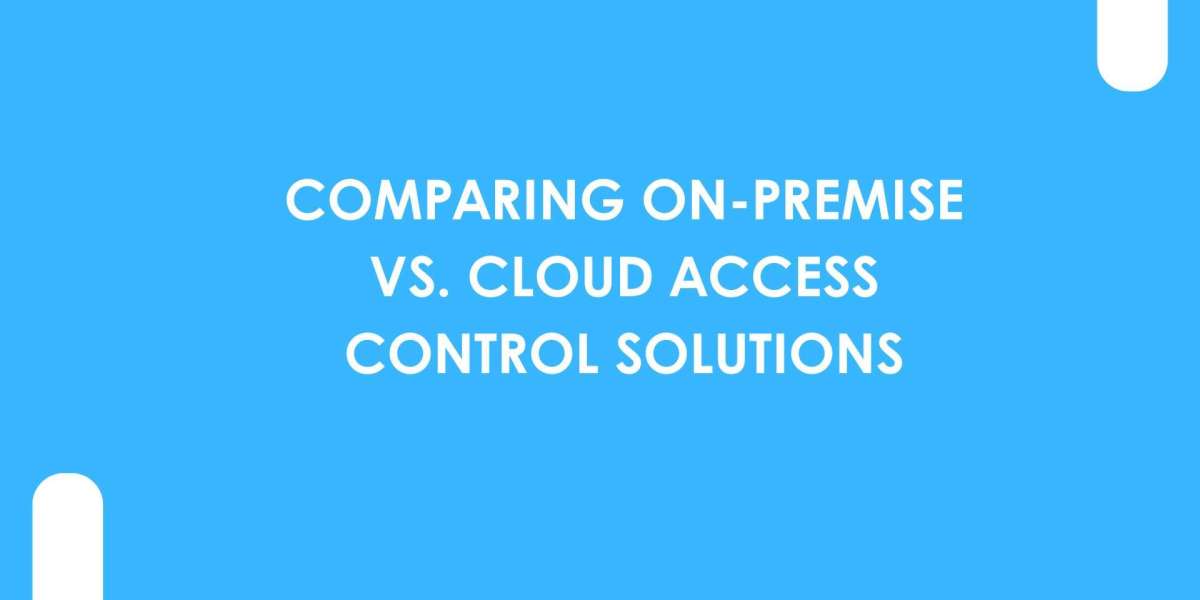As organizations grow and security threats become more advanced, the demand for smarter and more efficient access management is increasing. Choosing the right Access Control System is a crucial step in protecting people, property, and sensitive information. One of the most important decisions in this process is whether to deploy an on-premise or a cloud-based access control solution.
At XTEN-AV, we help security consultants, system integrators, and facility managers design access control systems tailored to their needs. In this blog, we will explore the differences between on-premise and cloud access control solutions, highlighting their advantages, challenges, and which option is right for your environment.
What Is an Access Control System
An access control system restricts entry to a building, room, or digital resource. It verifies the identity of individuals before granting access, using credentials like cards, PINs, biometrics, or mobile devices. These systems also keep logs of who accessed which areas and when.
Access control can be implemented through two main types of systems:
On-Premise Systems: Hosted and managed locally on physical servers.
Cloud-Based Systems: Hosted remotely on the internet and accessed via the cloud.
What Is an On-Premise Access Control System
An on-premise access control system stores and processes all data locally. The servers, software, and infrastructure are located within the building or organization’s property.
Key Features:
Hosted and maintained on local servers
Managed by internal IT or security teams
Accessed through internal networks
Requires manual software updates and maintenance
Advantages:
Full Control Over Data
Since data is stored locally, organizations have complete control over security and privacy.No Dependence on Internet
On-premise systems continue to function even during internet outages.Custom Configurations
Ideal for businesses with unique security needs that require full customization.Compliance Support
Some industries with strict compliance requirements may prefer local data storage.
Challenges:
Higher upfront cost for servers and infrastructure
Requires in-house IT or technical staff for maintenance
Limited scalability without hardware upgrades
Slower software updates and patch management
What Is a Cloud-Based Access Control System
Cloud-based access control stores data offsite in secure data centers and allows users to manage access remotely through a web interface or mobile app.
Key Features:
Hosted on remote servers maintained by service providers
Accessible from anywhere via the internet
Managed through cloud dashboards and mobile apps
Automatic updates and backup
Advantages:
Remote Management
Grant or revoke access from anywhere using a smartphone or web portal.Lower Initial Investment
No need for onsite servers or large IT teams. Costs are typically subscription-based.Scalability
Easily add users, locations, or doors without significant infrastructure changes.Automatic Updates and Backups
Stay current with the latest security patches without manual intervention.Real-Time Monitoring
Receive live alerts, view access logs, and manage permissions instantly.
Challenges:
Requires a stable internet connection for remote features
May raise concerns over data privacy and cloud storage regulations
Dependent on the vendor for service availability and security updates
Comparing On-Premise vs. Cloud Access Control
| Feature | On-Premise Access Control | Cloud Access Control |
|---|---|---|
| Data Storage | Local servers | Remote cloud servers |
| Management | Internal IT staff | Cloud dashboard or app |
| Initial Cost | High (hardware and installation) | Lower (subscription model) |
| Maintenance | Manual updates and backups | Automatic updates and cloud backups |
| Access | Local network only | Anywhere with internet |
| Scalability | Limited without hardware upgrades | Easily scalable across locations |
| Security Control | Full internal control | Managed by third-party provider |
| Internet Dependency | Operates offline | Requires internet for full functionality |
| Best For | Large enterprises with IT resources | Small to mid-sized businesses, remote teams |
Use Cases for On-Premise Systems
Government and Military Facilities
Require tight control over all data and cannot rely on external providers.Highly Regulated Industries
Financial, legal, or healthcare sectors where compliance requires strict local data handling.Remote or Offline Locations
Sites with unreliable internet access benefit from locally hosted systems.Organizations with Dedicated IT Teams
Those able to manage updates, troubleshooting, and infrastructure internally.
Use Cases for Cloud-Based Systems
Multi-Site Corporations
Businesses with locations in different cities or countries can manage all access from one platform.Growing Startups and SMBs
Benefit from the low cost, scalability, and flexibility of cloud systems.Hybrid Workplaces
Enable remote access management and real-time monitoring even when administrators are offsite.Co-Working Spaces and Multi-Tenant Buildings
Provide access to different users, tenants, or visitors with flexible permissions.
XTEN-AV’s Role in Access Control Design
Whether you choose an on-premise or cloud-based system, careful planning is essential. XTEN-AV allows integrators to create detailed, accurate access control diagrams, select compatible components, and design solutions based on the client's operational needs.
Our platform supports system scalability, cloud integration, and advanced configurations to help users visualize how access control fits within the entire AV and security ecosystem.
Final Thoughts
Choosing between on-premise and cloud access control systems depends on your specific goals, IT resources, budget, and security requirements.
An on-premise Access Control System offers total control and independence but comes with higher upfront costs and maintenance responsibility. A cloud system provides greater flexibility, lower costs, and easy scalability, but requires a reliable internet connection and trust in the provider’s data security.
Both systems can be effective when designed and implemented properly. With XTEN-AV, you can build the right access control solution that aligns with your organization’s size, structure, and future growth. Whether it is on-premise or cloud, security starts with a smart design.
Read more: https://squarespaceblog.com/access-control-systems-for-multi-tenant-buildings/














